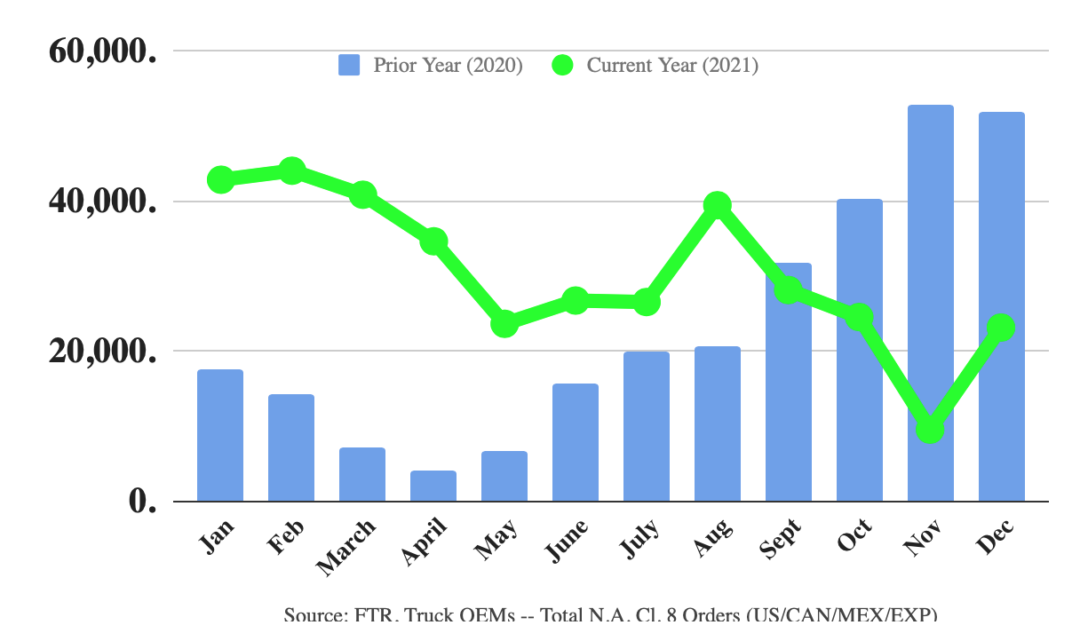Supply chain problems restrict new truck production, despite December bump
FTR report finds that automakers face uncertain conditions despite roaring demand from fleets.

Preliminary statistics for the number of new trucks ordered last month recovered to levels near September and October figures, but remained far below the production volume needed to resolve severe capacity restrictions in North American freight operations, according to the transportation sector analyst firm FTR.
North American Class 8 net orders recovered to 23,100 units in December, which was back in the same range as September and October, Bloomington, Indiana-based FTR reported. In this turbulent market, that level meant that December order activity was up 139% from the previous month but still down 55% from December 2021.
FTR found that the December number is encouraging in the sense that all auto manufacturers entered some orders, indicating at least some optimism about improved future supply chain performance. However, due to uncertain conditions, original equipment manufacturers (OEMs) are content to keep backlogs at current levels and continue to enter orders just a portion at a time.
“The current order volume still understates the tremendous demand for new trucks. The OEMs have a large number of fleet commitments for 2022. They are delaying entering these orders until they know how many they will be able to build each month. Supply chain delays continue to constrain build rates,” Don Ake, vice president of commercial vehicles for FTR, said in a release.
“Fleets need a considerable number of new trucks right now. Industry capacity is extremely tight, resulting in elevated freight rates. The carriers have freight to haul and funds available for new trucks, but OEMs can’t build enough. Also, the large fleets have had to run vehicles beyond their trade-in cycles and need replacement trucks,” Ake said.
Related Articles
Copyright ©2024. All Rights ReservedDesign, CMS, Hosting & Web Development :: ePublishing